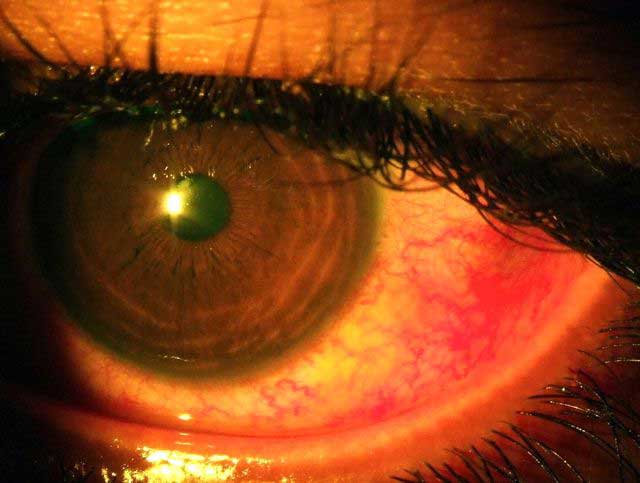PRESS RELEASE – (In recognition of World Diabetes Day, Dr. R. A. Sharma, Secretary of The Ophthalmological Society, shares his insights on Diabetic Eye Disease in Pregnancy)
DIABETES is a condition where the body’s ability to use and store sugar is altered. This often results in too much sugar in the blood, which can cause damage throughout the body, including the eyes. Insulin is a hormone secreted by the body to control blood sugar levels. Diabetes can be classified in to Type 1 (inability to produce insulin) and Type 2 (insulin resistance).
Diabetic retinopathy is a condition that occurs in people who have diabetes. It can cause progressive damage to the retina, which is the inside lining of the back of the eye that is responsible for vision. Diabetic retinopathy can be a serious sight-threatening complication of diabetes if left untreated.
Over the passage of time, diabetes damages the blood vessels in the retina. Diabetic retinopathy occurs when these tiny blood vessels leak blood, fluid and other materials. This results in damage to the retinal tissue manifesting itself as reduced vision. Both eyes are usually affected but may be asymmetrical. The longer a person has diabetes, the more likely they will develop diabetic retinopathy. However, the better the control of the blood sugar, the slower the onset and progression the retinopathy will be.
Symptoms of diabetic retinopathy include:
• Seeing floaters
• Blurred vision
• Having a dark or empty spot in the centre of your vision
• Difficulty seeing well at night
When people with diabetes experience long periods of high blood sugar, fluid can accumulate in the lens inside the eye that controls focusing. This can change the curvature of the lens, leading to blurred vision. However, once blood sugar levels are controlled, the blurred vision should improve.
Often the early stages of diabetic retinopathy have no visual symptoms. This is because the changes in the eye may be occurring in the peripheral part of the retina (away from the centre part of the retina or visual axis). Early detection and treatment can reduce the potential for significant vision loss. This highlights the need for regular screening.
Treatment of diabetic retinopathy varies depending on the extent of the disease.
People with diabetic retinopathy may need laser, injections into the eye, surgery or a combination of these to manage their stage of retinopathy. If you are diabetic, you can help prevent or slow the development of diabetic retinopathy by:
• Taking your prescribed medication
• Sticking to your diet
• Exercising regularly
• Controlling high blood pressure
• Avoiding alcohol and smoking
Pregnant women are at risk of developing diabetes during the pregnancy (Gestational Diabetes), or if diabetic already are at risk of suffering a worsening in their diabetic eye disease.
Diabetic retinopathy is not usually a significant complication in Gestational Diabetes. However, this is dependent on several factors and so these women do need regular screening from the discovery of diabetes to 12 months post-delivery.
In women with pre-existing diabetes, the exact cause of progression of the retinopathy is not fully understood but is thought to involve various processes:
1) Hormonal Changes: During pregnancy several hormones are produced in increased amounts. These include Oestrogen, Progesterone and Human Placental Lactogen. These cause changes in the blood vessel walls, resulting in increased leakage from the vessels.
2) Circulatory Changes: During pregnancy, the blood volume and flow are increased. This results in increased leakage from the vessels that were already damaged by diabetes.
Those with Type 1 diabetes are more vulnerable to ocular changes in pregnancy.
Other risk factors include:
a) Duration of Diabetes
b) Severity of retinopathy before pregnancy
c) Level of diabetic control
d) Blood Pressure
These all contribute to a progression of retinopathy and may result in a reduction of vision. The treatment of diabetic retinopathy in pregnancy is very similar to that of non-pregnant diabetics described above. Subtle exceptions are the use of injections into the eyes and surgery. This is because some of the medications injected are used to reduce the growth of new blood vessels in the eye and so control bleeding. However, the safety of these medications in pregnancy hasn’t been fully established as yet. As for surgery, often lying a heavily pregnant woman down for a long period of time to operate may not be comfortable for her.
As mentioned, screening for retinopathy/retinopathy progression is crucial in preventing vision loss. Screening should be done by an Ophthalmologist with a very low threshold for onward referral to a Retinal Specialist. In Gestational diabetes, the first screening should be done within 2 weeks of the diagnosis. Depending on the findings, repeat screening should be performed every 3-4 months until 12 months post-delivery as a minimum.
In pre-existing diabetes, frequently, these patients are being seen for screening already. However, where they are not, the first screening should coincide with the first antenatal clinic. Depending on findings, re-screening performed every 3 months until 12 months post-delivery as a minimum.
In many cases, the diabetic retinopathy will show some regression after delivery. This in response to the reduction of exacerbating factors described above.
However, it is worth remembering that vision loss will not reverse even if the retinopathy does after delivery. This underlines the importance of treating the progression of retinopathy as it occurs to prevent vision loss in the first place. It is also worth noting that diabetic retinopathy is not a contraindication to Vaginal Delivery.
In summary, diabetes in pregnancy can have profound changes on the eyes and vision. Understanding this and screening for the changes will allow for treatment in a timely manner and so reduce the risk of vision loss.
(Dr. R. A. Sharma is a practicing Ophthalmologist and Secretary of The Ophthalmological Society of the West Indies)










![Simón Bolívar - Liberator of the Americas [Photo credit: Venezuelan Embassy]](https://thevoiceslu.com/wp-content/uploads/2025/12/Simon-Bolivar-feat-2-380x250.jpg)
